Christmas 2018
Christmas lights.
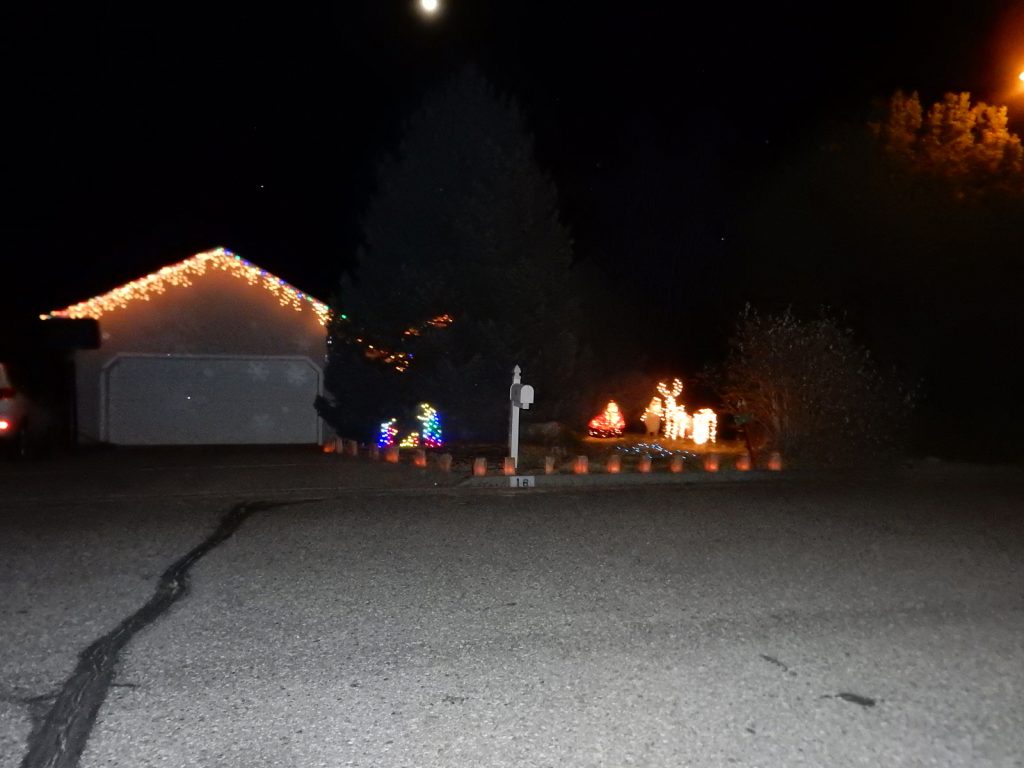
Christmas tree.
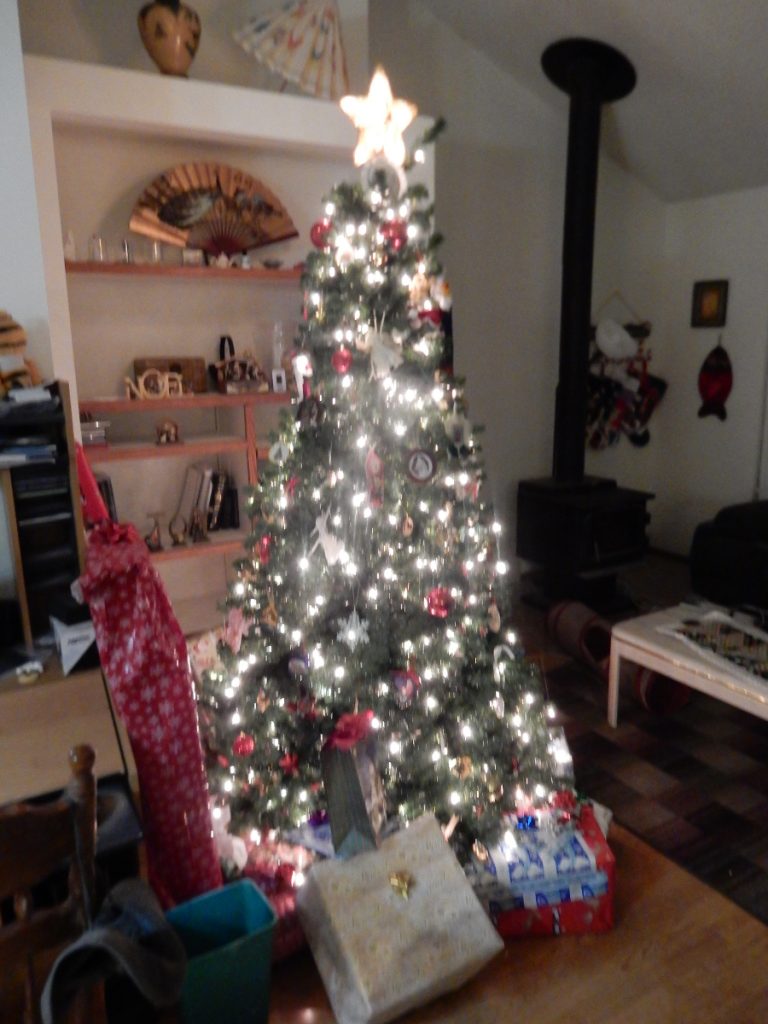
My children are now all adults now, who like sleeping in, so the great unwrapping of presents sometimes does not begin until after noon.
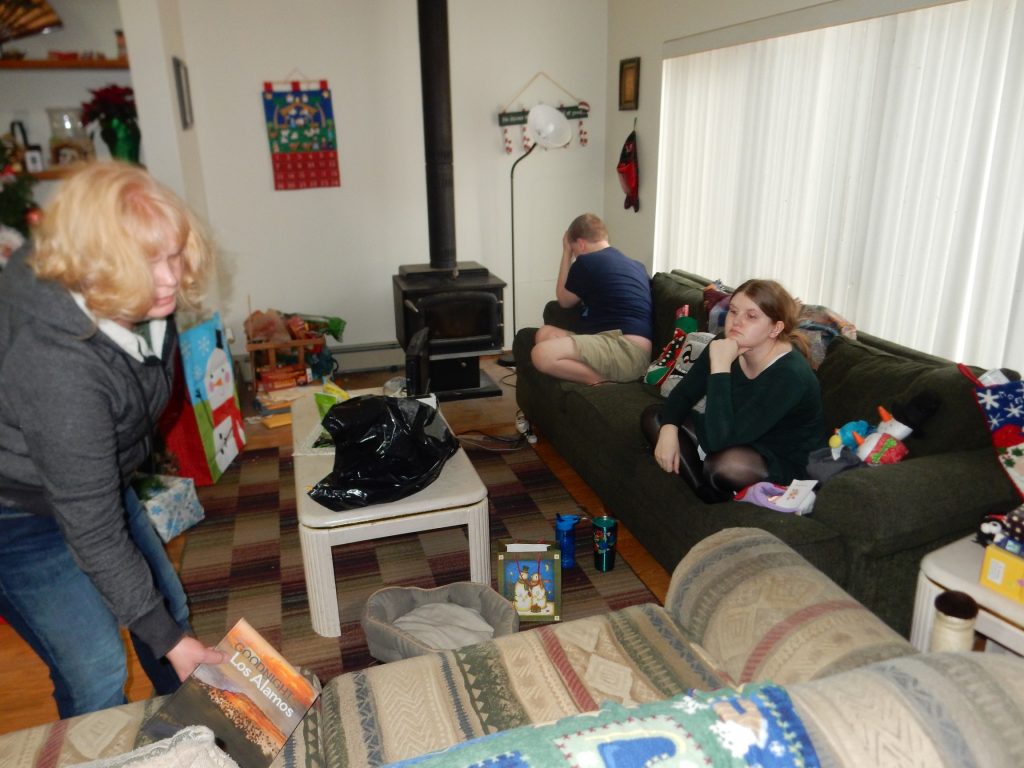
Nathan is camera shy and more or less demanded that I put the camera away for the rest of the day.
The camera is working, but it’s not entirely well. The GPS takes a very long time to lock on, and the compass feature doesn’t work even when it gets a GPS lock. The USB port is not working, so I have to connect the memory card directly to the computer to download the pictures, and I’ve had to order a battery charger, since I can’t recharge batteries in the camera through the USB port. Still, it’s focusing properly now, and it’s better than the old camera.
I have a weird habit of giving myself a couple of geologic specimens from the Earth Treasures show every year for Christmas. I splurged a little this year.
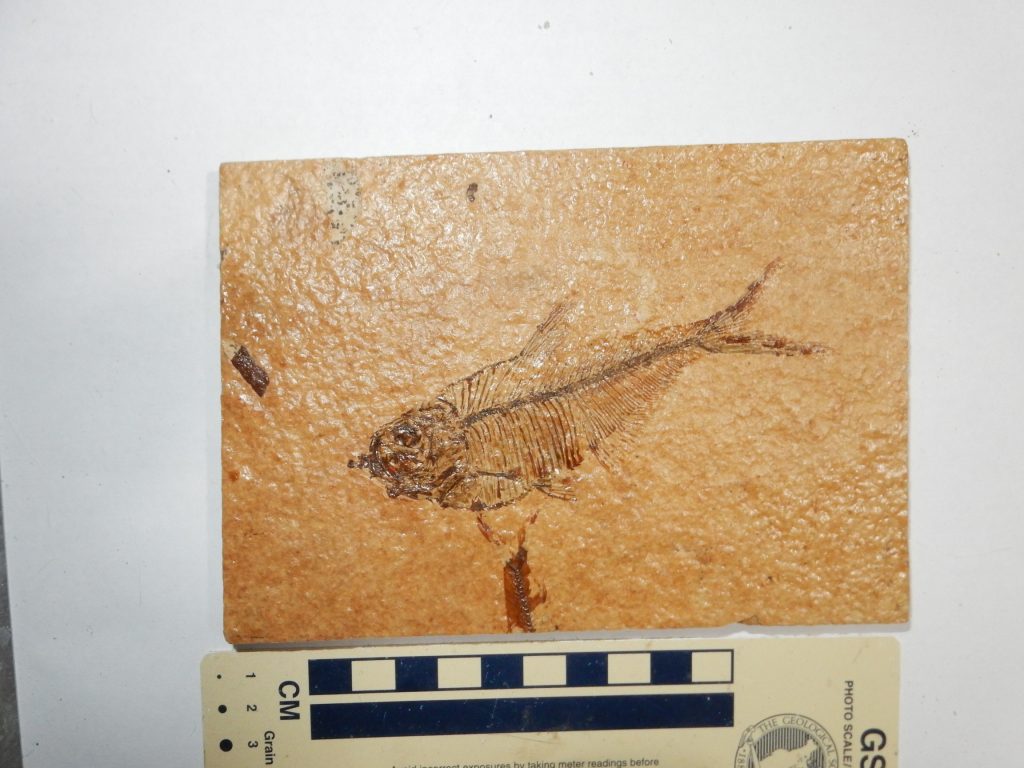
A Green River Formation fish tile, from about 50 million years ago. The genus is Diplomystus, a kind of saber-toothed freshwater herring. (The chuckling you are hearing is my paleontologist friend, Bruce Rabe.) This is a fairly nice specimen and not too bad at $25. That seems to be a typical asking price. I had to make several tries to get a decent photograph. I was pretty sure I needed a flash, but the surface of the tile has a fairly heavy preservative coat that reflects the flash.
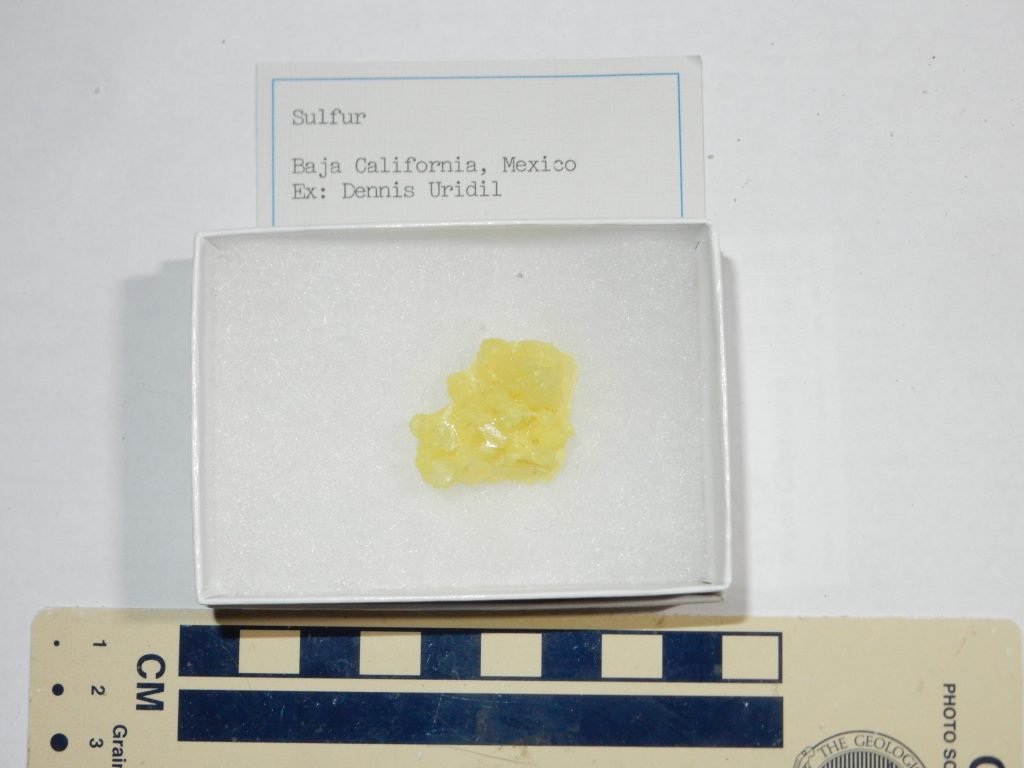
This is one for the book; sulfur is an important element in volcanism. However, this photograph isn’t great. Well, heck, let’s see if I can do better:

Yeah, that’s better. This one was with the flash turned off. I should try that with the fish sometime.
In addition to the self-purchased goodies, I got a geology book (John Sinkankas’ classic Mineralogy), a political theory book (sorry, not going to start a discussion of politics here), and a stocking full of diabetic-friendly snackums. The kids gave me a new LED lighting hood for my big 55-gallon aquarium, and Cindy gave me hardware for a DIY CO2 injection system.
The tank has had algae problems for a while. They’ve grown over all the plants and mostly smothered them. I had tried changing out most of the water and using a combination of phosphate buffer and hydrochloric acid to bring the pH to the slightly acid side, thinking this might help. Turns out this was almost exactly the wrong thing to do; the algae flourished more than ever. I went back to tap water; ours is about 5 degrees of carbonate hardness, with a pH near 7.4, which is actually about what I want as starting material. The trick is to get enough CO2 in the water to feed green plant growth and bring the pH down naturally. Hence the injection system. I have an old bubble ladder and yeast CO2 system; the ladder is a kind of vertical zigzag, and as the yeast generate CO2 by fermenting sugar, each bubble works its way through the zigzags slowly enough that about 80% of the bubble has time to go into solution. The bubbles are kind of fun to watch but the fermentation generates CO2 too slowly to give me the concentration I want.
So the hardware Cindy gave me allows me to take two two-liter soda bottles, fill one with acid solution (citrate is best but I’m improvising with vinegar for the time being) and the other with baking soda mixed with some water. The acid bottle has a pressure gauge on top and a tube draining into the soda bottle. The acid end of the tube has a magnetic ball so you can pull it out of the acid solution to stop acid transferring to the other bottle, if you want to shut down the reaction for some reason. The baking soda bottle has a second tube that goes to a needle valve and then to the fish tank.
You squeeze some acid from the acid bottle through the tube into the soda bottle. This makes a great foam of CO2, which bubbles back into the acid bottle to pressurize it. The gauge lets you estimate how much acid to squeeze to get a good head of pressure in the bottle without it exploding. Once you open the needle valve, the slow bleed of CO2 allows the back pressure in the acid bottle to slowly feed fresh acid into the soda bottle to keep the reaction going. Simple, almost foolproof (though fools are so ingenious!) and you have a cheap low-pressure CO2 supply.
The next trick is getting the CO2 into the tank in such a way that it dissolves in the water rather than just bubbling away. Cindy gave me a ceramic disk diffuser, I hooked it up, and a gratifying mist of bubbles wafted out of it. Cindy also gave me a little pH bulb that lets me see how the CO2 is building up in the tank and get it to a level the plants love but won’t harm the fish.
Problem is, the disk had a “hot spot” on one side that was producing rather large bubbles that weren’t dissolving efficiently. Naturally I had to mess with this; live and learn, eh? I tried dabbing a little silicone cement on the hot spot. Sure enough, when it went back in the tank, truly huge bubbles came off the edges of the silicone bead. Well, crep.
Next I tried nail polish. This only made the problem worse.
Well, the disk cost $8; I can write that off without too much qualms. I’ve hooked the tube to the bubble ladder, giving up on my yeast generator, and I’m running bubbles through it much faster than the yeast generator could manage. May be working; the pH is still not as low as I want, but at least the indicator bulb has gone from deep blue to dark emerald green. I’d like it to be vivid green.
The DIY kit is cheap. I may buy a second and a second diffuser and add that to the one running the bubble ladder. If the new disk also has a hot spot, I’ll position it under the filter intake and let the filter suck up the bubbles and thoroughly homogenize them in the impeller. That should make for a bit better efficiency.
I also have citric acid on the way. Vinegar is pretty dilute acid, it buffers to a rather low pH, and it smells. Citric acid can make very concentrated solution, meaning I don’t have to recharge the bottles as often; it is a triprotic acid with excellent buffering, making for a steadier reaction; and it is not volatile. Citric acid costs about $3 a pound, and if my calculations are right, half a pound should last at least a week, so that’s affordable, even if I go to two setups. The baking soda is $0.88 a pound so it’s not a problem at all.
I suppose I could cough up a couple hundred quatloos for a proper high-pressure CO2 system based on CO2 cylinders, but I need the money for other toys and refilling the cylinders is likely to prove an ongoing hassle. Paintball isn’t the thing it used to be and the only folks refilling CO2 cylinders hereabouts are in Espanola doing it as a side business.
Oh, and Cindy and the kids also gave me some test kits for the tank. I was already testing pH and nitrate levels periodically; nitrate looks fine and I already knew the pH of our water is a bit alkaline. But the phosphate test showed me that I still have ludicrous amounts of phosphate buffer left in the tank that hasn’t been flushed out yet; I’m changing about 20% of the water every day until the phosphate gets under control. I tried the iron test and it showed nada, even though I’m adding chelated iron every day. Probably being precipitated by the phosphate excess; no point testing again until that’s under control. The hardness test confirms my water has about 5 degrees of carbonate hardness, which is fine, and also shows that the general hardness is only slightly greater.
The boys got gift cards for video games and new game controllers for their game systems. Also lots of snarky tee-shirts. Kira got a number of books, including the complete works of Hans Christian Andersen (from me.) Apparently the fibromyalgia community claims Mr. Andersen as one of their own. (And the stories are classics.) Kira and Cindy also got some inexpensive jewelry; I hadn’t realized they were back into bling. I gave Cindy a double-feature Star Trek DVD; she has been a big fan as long as I have known her, and stayed with it after I decided Star Trek had jumped the shark. (Though she despises the reboots as much as I do.)
Meanwhile, I will be doing no serious wanderlusting for a while.
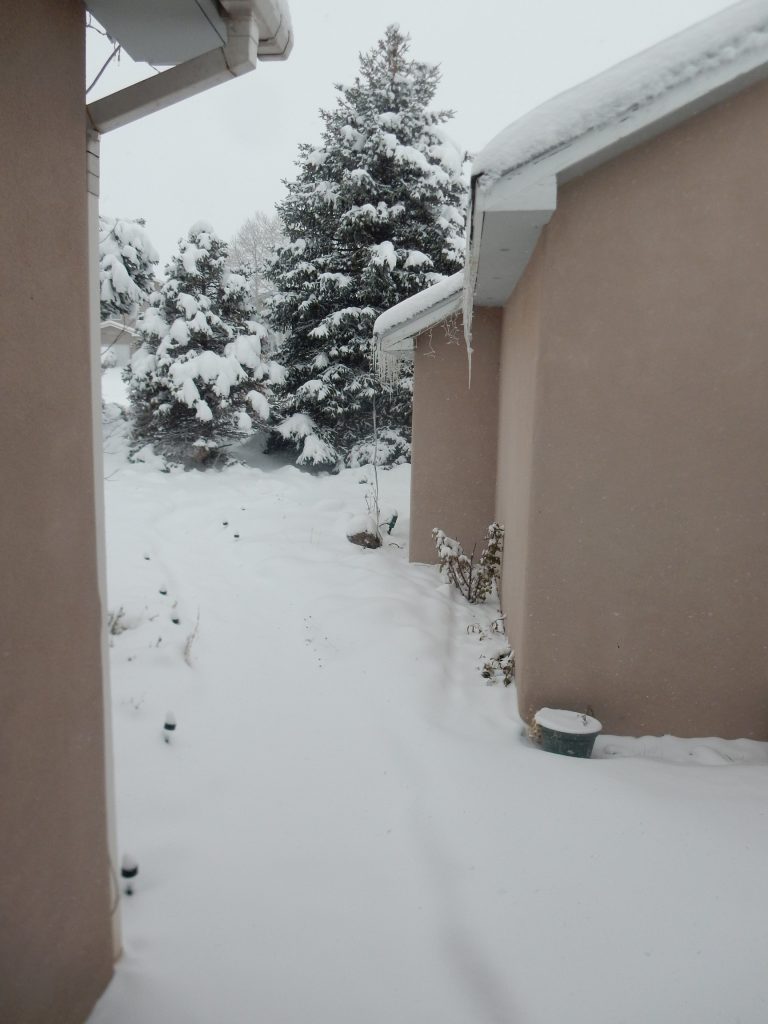
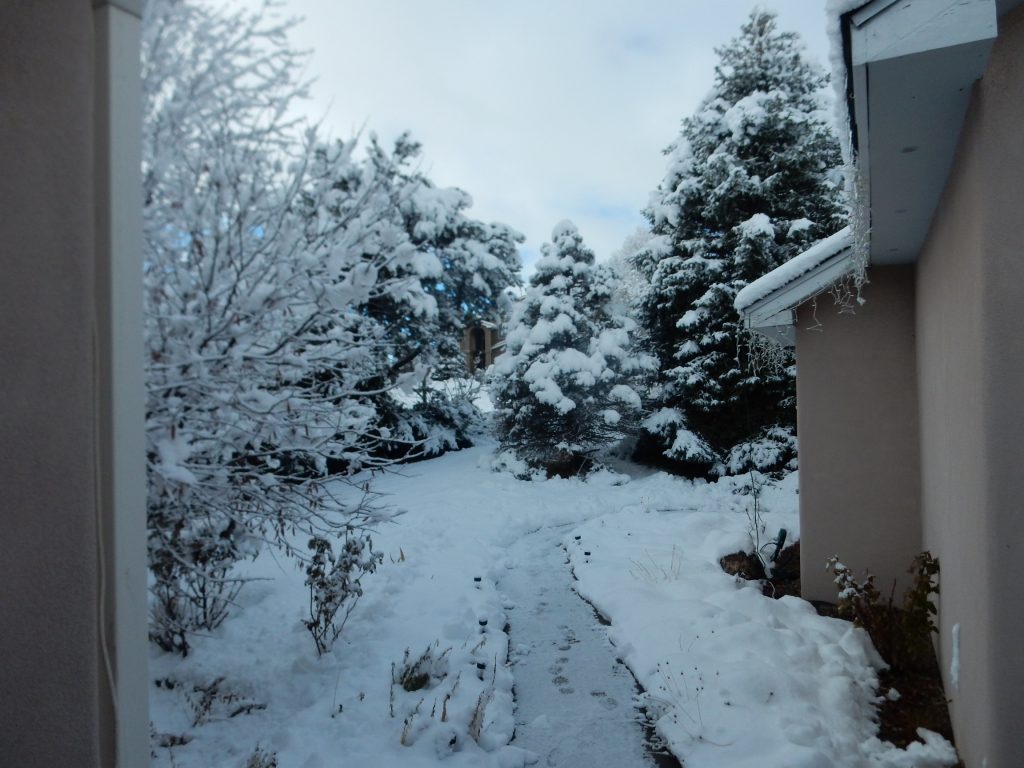
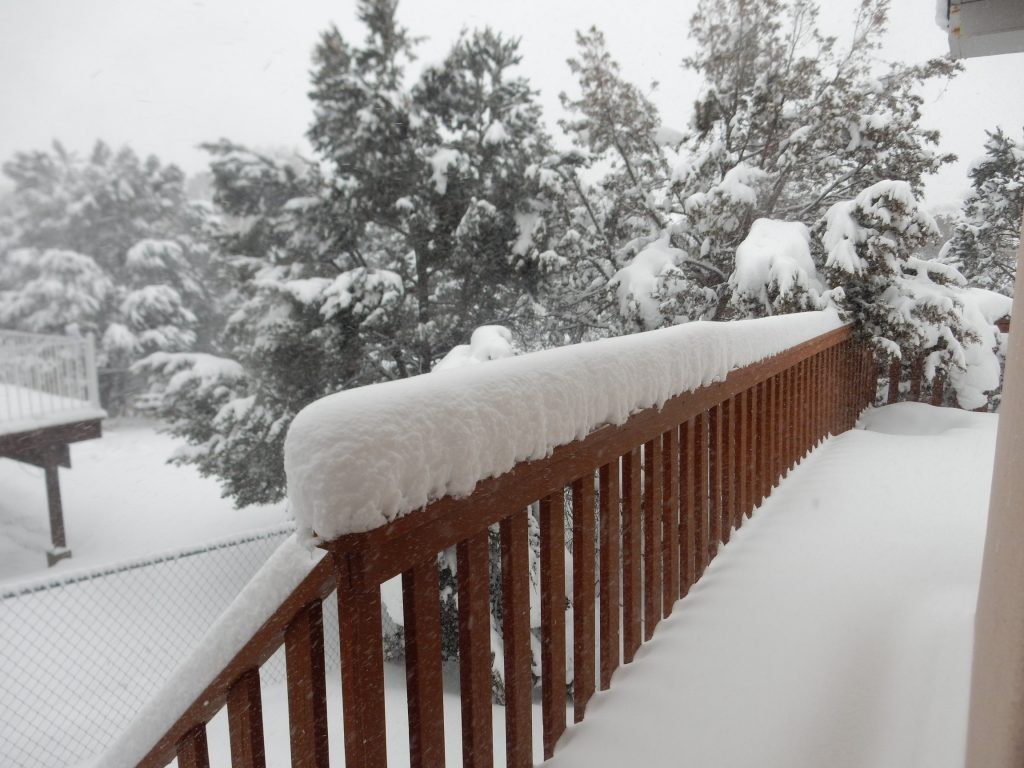
We’ve gotten at least a foot of snow since Christmas Eve, which was a beautiful warm day on which I simply didn’t have time to hike, and the temperature last night hit -3 F. I met a couple of friends in Santa Fe this morning for breakfast; the drive over the roads was a bit hairy. I also picked up some fresh plants for the aquarium.
On the other hand, I’ve had plenty of time to catalog the large pile of rocks on my desk and file them away in my collection. I still have about ten samples to go, but I can do that pretty quickly come Monday.
This is looking like a wet, cold winter, so I doubt there will be much wanderlusting. I hope y’all can put up with me talking about the aquarium, or other of my interests, instead.
